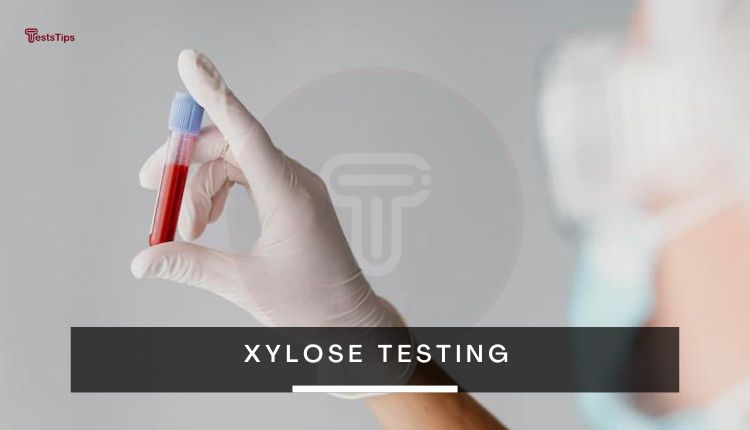Xylose Testing. Everything You Need To Know About D-xylose tolerance
Xylose testing offers valuable insight into a person’s carbohydrate metabolism and overall health. Learn why it is important and how to get tested.

Table of Contents
Xylose testing is used to help diagnose and assess the severity of a range of conditions, including carbohydrate metabolism disorders and diseases that affect the digestive system. It can also provide valuable insight into overall health and well-being. Learn about the importance of xylose testing, how to get tested and what the results might mean for you.
What is Xylose testing
Xylose is a simple sugar (carbohydrate) that is usually easily absorbed by the body.
This test, called the D-xylose absorption test, measures the level of D-xylose in a blood or urine sample. It is a diagnostic test that measures a body’s ability to absorb, digest, and metabolize the sugar D-xylose.
Xylose Testing can detect deficits in carbohydrate metabolism and other disorders affecting the digestive system, and help diagnose conditions that present with malabsorption of the proximal small intestine due to defects in the absorption of food.
The test involves consuming a xylose solution, followed by a timed collection of urine samples over two hours to measure the amount of xylose absorbed by the body.
Synonyms: D-xylose absorption test, xylose absorption test, xylose tolerance test, D-xylose tolerance test.
Why is Xylose Testing Done?
A xylose test is commonly used to:
- Determine why a child isn’t gaining weight, especially if the child appears to be eating enough.
- Aid in the diagnosis of malabsorption disorders, which affect your ability to digest and absorb nutrients from food.
When Should a Xylose Test Be Done?
You may require this test if you have the following symptoms of a malabsorption disorder:
- Unexplained weight loss or inability to gain weight in children.
- Poor energy levels.
- Prolonged diarrhoea.
- Abdominal discomfort.
- Bloating.
- Gases.
How Is the Test Performed?

The xylose test is a two-part process, and takes around two hours. First, a person will drink 8 ounces of water containing 25 grams of D-xylose sugar.
After the person finishes drinking the solution, they will then provide blood samples over approximately two hours to complete and will measure how well their intestines absorb the sugar.
The standard 25-g d-xylose test in adults, based on analysis of a 5-h urine collection and a 1-h serum sample, discriminates between normal subjects and people with malabsorption syndromes.
Preparation for Xylose Testing
Before the test, you must fast (not eat or drink) for eight hours. Children under the age of 9 must fast for four hours prior to the test.
You must abstain from foods high in pentose, a type of sugar similar to xylose, for 24 hours before the test. Fruits, Jams, and pastries, are among these foods. Your provider will inform you if any additional precautions are required.
Risks of Xylose Testing
There are a few risks associated with xylose testing. For example, there is minimal risk of minor bruising at the needle, and the test is painless. However, there is a small chance that the test results may be inaccurate. Additionally, there is the potential for an infection if the sample is not properly collected. In general, though, xylose testing is a safe and painless way to get information about your food absorption capacity.
Interpreting the Results of a Xylose Test
If your results showed lower than normal amounts of xylose in the blood or urine, it may mean you have a malabsorption condition. This could be due to a lack of absorption of sugar in the intestines, or malabsorption disorder, such as:
- Celiac disease is an autoimmune disorder characterised by a severe allergy to gluten.
- Crohn’s disease is a digestive condition that causes swelling, inflammation, and sores.
- Whipple disease is a rare condition that impairs nutrient absorption in the small intestine.
- A parasitic infection, such as:
- Hookworm
- Giardiasis
If your blood xylose levels were normal but your urine levels were low, this could indicate kidney disease and/or malabsorption. More tests may be required before your doctor can make a diagnosis.
The Difference Between Xylose and Glucose Testing
Xylose and glucose tests are two diagnostic tests used to measure levels of sugar in the blood. Xylose testing is used to measure the absorption of xylose sugar in the intestines, while glucose testing is used to measure glucose levels in the blood. Xylose testing is generally done with a blood sample and it takes a long time, but glucose testing can be done by blood glucose measurement systems for patients self-testing.with a finger-prick test.
It is important to note that xylose testing can interfere with glucose-dehydrogenase-based (GDH) blood glucose measurement systems for patients self-testing. This is why it is important for patients conducting a self-test to use a different method of testing for glucose levels.
In a study, it was found that normal subjects experienced a significant decrease in serum glucose levels 15 and 30 minutes after consuming xylose. This emphasizes the importance of using different tests for monitoring blood sugar levels.
“Related: Haptoglobin test. Purpose and results of the test“
Related tests
- Celiac Disease Screening.
- Ova and Parasite Test.
- Lactose Intolerance
As we have seen, the xylose absorption test is a useful tool for the differential diagnosis of malabsorption syndromes. It can be carried out quickly and is relatively inexpensive, making it a valuable tool in the clinical setting. In conclusion, the use of the xylose absorption test is a valuable addition to the arsenal of tools available for the diagnosis and treatment of malabsorption syndromes.
